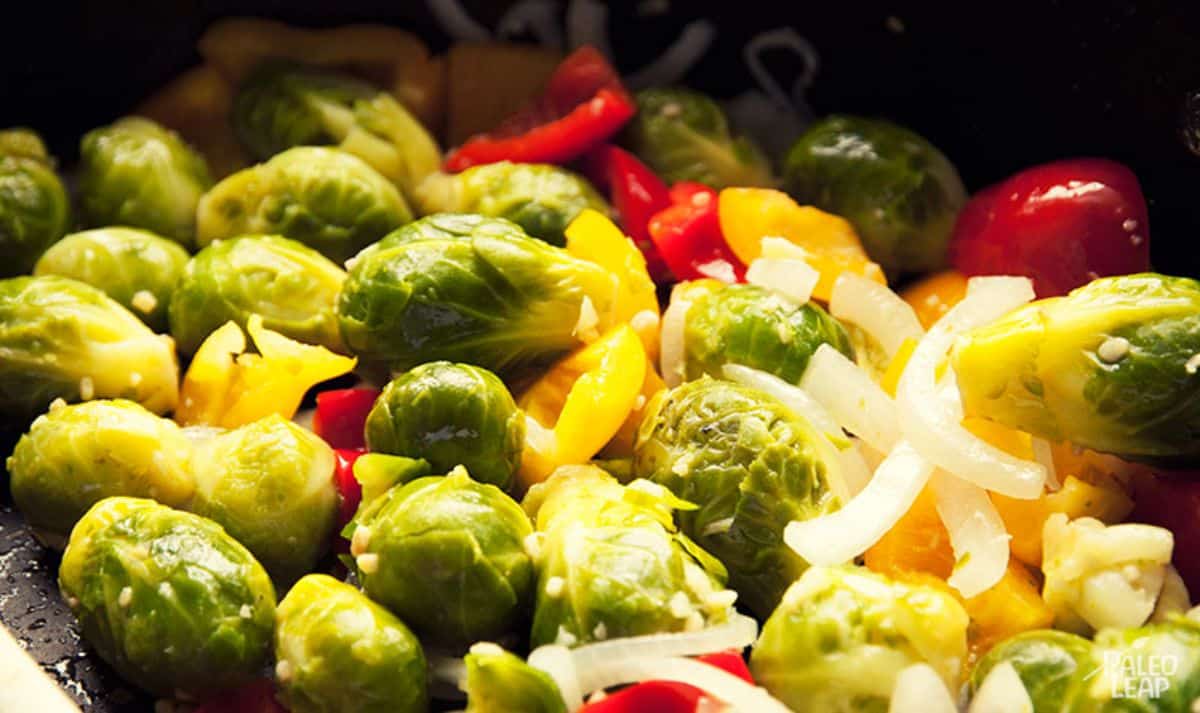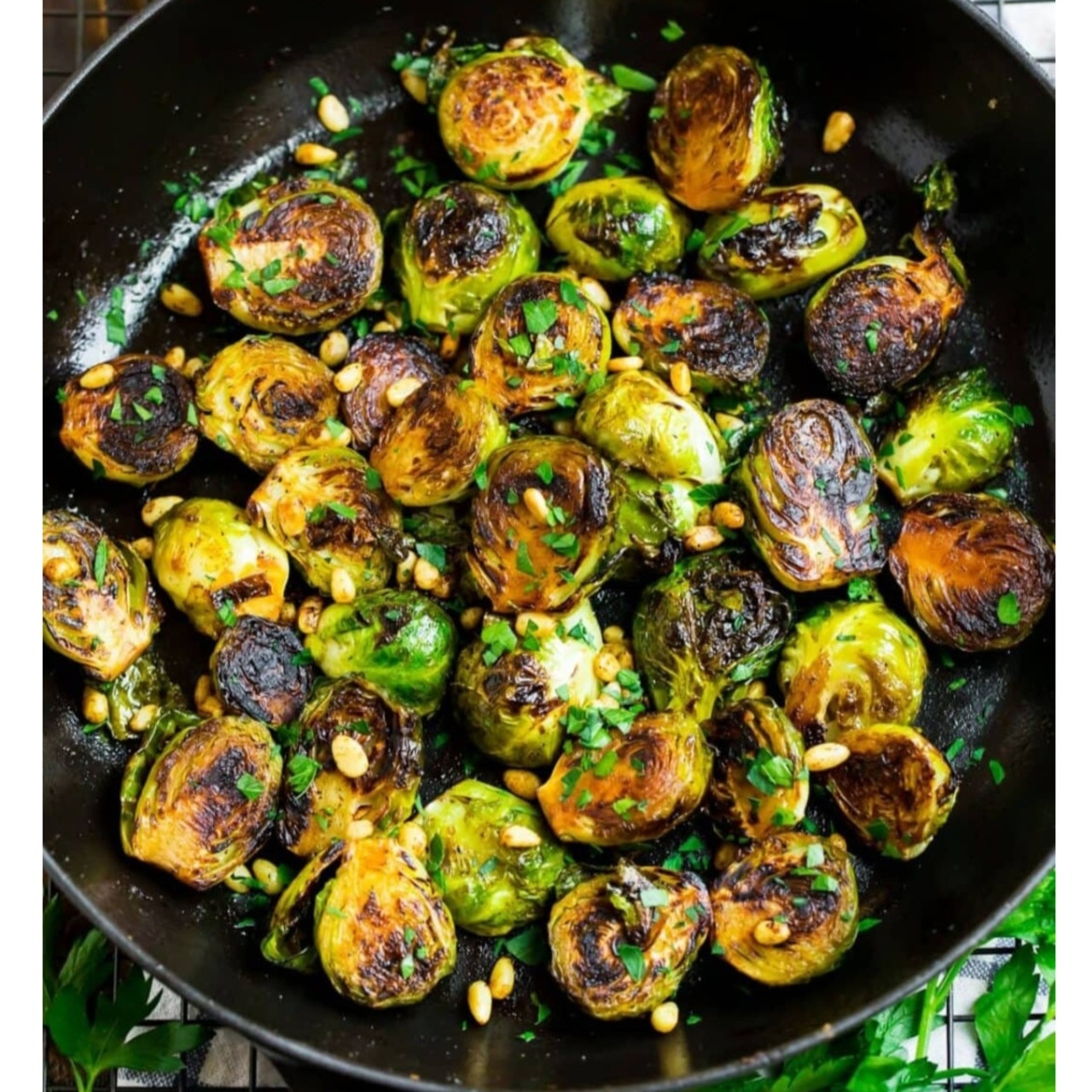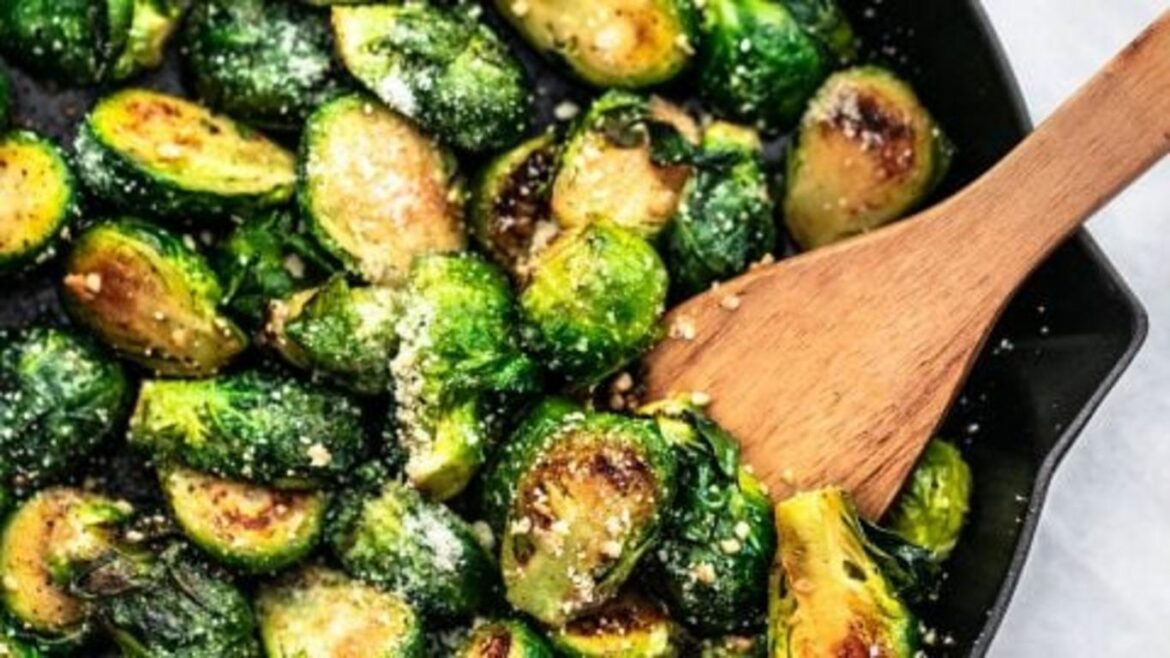The Heart of the Dish: Flavor and Technique
The brilliance of this dish, beyond simply combining chicken and Brussels sprouts, lies in the masterful execution of a sticky, deeply flavorful Asian-inspired sauce. It’s not just about sweetness; it’s a carefully calibrated balance of savory, subtly spicy, and umami-rich notes, achieved through layering techniques. The foundation begins with a rich, caramel-like reduction, typically built around soy sauce – a crucial element that provides the foundational saltiness and depth. However, a simple soy sauce reduction would quickly become monotonous. Instead, we incorporate ingredients like brown sugar or maple syrup – but judiciously, to provide just the right amount of sweetness that balances the salt. This initial reduction is then intensified with additions like Shaoxing wine, a Chinese rice wine known for its complex fermented notes – fermented wine – which adds an incredibly nuanced depth that’s difficult to replicate. The addition of grated ginger and garlic – fresh ginger – aren’t just for pungent flavor; they also contribute precious enzymes that help break down the ingredients, creating a smoother, more cohesive sauce. These components are carefully heated, creating a base for layering further flavor complexities. Crucially, the sauce’s character is then elevated with a touch of chili – chili flakes – or a finely minced chili pepper, adding a gentle warmth and subtle spice that doesn’t overpower the other flavors. This isn’t about a blazing inferno; it’s about a nuanced warmth that builds with each bite. A key technique often employed is the addition of cornstarch or arrowroot powder – cornstarch slurry – to thicken the sauce to a luscious, sticky consistency. This thickening process isn’t just about texture; it helps to encapsulate the flavors, ensuring they cling to the chicken and Brussels sprouts. Furthermore, incorporating a small amount of fish sauce – fish sauce – provides an almost undetectable umami boost, enhancing the savory character of the entire dish and adding another layer of depth, mirroring the complexities often found in authentic Asian cuisine. Finally, the sauce’s final character is impacted by its temperature: the sauce should be cooked at a simmer and stirred constantly, being careful not to burn the bottom. Allowing the sauce to reduce further after incorporating the thickening agent is also critical; it intensifies the flavors and creates a thick, glossy finish. The entire process is about building flavor layers, understanding how heat affects those flavors, and achieving a balance that’s both satisfying and exciting – a far cry from simply tossing ingredients together. Think of it as a slow-cooked symphony of taste, where each element plays a vital role in creating a harmonious and unforgettable dish. The success of the dish hinges on meticulous attention to these techniques, resulting in a sauce that’s both incredibly flavorful and beautifully sticky.
A Recipe Born from a Special Trip
The aroma of ginger, garlic, and sesame oil still clings to the memory of that trip – a weekend getaway to Asheville, North Carolina, with Liam. It wasn’t about grand monuments or bustling cities; it was about slowing down, finding pockets of beauty, and creating shared experiences. We’d stumbled upon a tiny, unassuming restaurant tucked away on a side street, ‘The Copper Kettle,’ renowned for its inventive Asian-inspired dishes. I remember ordering the Brussels sprouts – tossed in a sticky, savory glaze that was unlike anything I’d ever tasted. They were perfectly caramelized, slightly charred around the edges, and bursting with umami. Liam, ever the adventurer, insisted we try to recreate the dish back home. It quickly became our dish, a culinary reminder of that trip, and more importantly, of our time together. That weekend, surrounded by the vibrant fall foliage and the comforting silence of the mountains, was a powerful affirmation of our connection – a simple celebration of enjoying each other’s company. It wasn’t about impressing anyone, just a quiet moment of shared pleasure. The recipe, therefore, isn’t just a collection of ingredients and instructions; it’s imbued with the sentiment of that trip, a little piece of our shared joy. We’ve tweaked it over the years, of course, adjusting the sweetness and spice levels to our preferences, but the core essence – that sticky, intensely flavorful glaze – remains unchanged, a testament to the original inspiration. The memory of Liam’s encouraging enthusiasm, combined with the beautiful backdrop of the Blue Ridge Mountains, fuels every batch we make. It’s a dish that celebrates not just good food, but the value of time spent with someone you cherish. It’s a comforting, grounding experience—a reminder to appreciate the small things and the people who make life worthwhile. Thinking back, the most important ingredient wasn’t any specific spice or sauce, but the feeling of genuine connection and shared delight. That’s why, when we shared this meal, it felt less like cooking and more like sharing a story. And as we sat there, savoring each bite, surrounded by the warmth of the kitchen, we were, in essence, recreating the feeling of that first, unforgettable weekend – a reminder that the best moments in life aren’t always found in grand adventures, but in the quiet, simple joys of being together. The restaurant’s website, The Copper Kettle (though we’ve never revisited), remains a subtle touchstone, a tangible link to that special weekend. It’s also a reminder to be open to unexpected culinary discoveries and to always seek out moments of shared connection. And you know what? It’s entirely possible that the slight char on the Brussels sprouts, the very thing that made them so delicious, was a little bit of mountain air, a subtle hint of the Carolina breeze that captured the essence of that trip.
Key Ingredients for Maximum Impact
When crafting a dish like this Sticky Asian-Inspired Brussels Sprouts with Chicken, it’s not just about the final flavor; it’s about layering techniques and selecting ingredients that truly amplify the experience. The foundation, of course, begins with the Brussels sprouts themselves – opting for smaller, denser varieties like ‘Jade Beauty’ or ‘Baby Ball’ significantly improves their ability to caramelize and absorb the glaze. These types maintain their texture and sweetness longer during cooking, preventing them from becoming mushy, a common pitfall when cooking Brussels sprouts. Beyond the variety, consider the cut – halving or quartering them ensures even cooking and a beautiful presentation. But the star of this dish, and what truly unlocks the ‘impact,’ is the interplay of umami and sweetness. That’s why incorporating ingredients rich in glutamates – like tamari, a fermented soybean sauce, is so critical. Tamari, particularly a dark, rich variety, provides a deeper, more complex umami than many standard soy sauces, building a savory depth that balances the honey’s sweetness beautifully. Don’t underestimate the power of star anise – just one or two pieces, added early in the sauce-making process, contributes a subtle licorice note that’s incredibly fragrant and characteristic of many Asian cuisines. Furthermore, a touch of grated fresh ginger – a generous teaspoon – delivers a vibrant, zesty punch that brightens the entire flavor profile, and also adds beneficial digestive enzymes. Lastly, a small amount of rice vinegar, ideally a good quality aged rice vinegar, is absolutely essential. It provides a necessary acidity that cuts through the richness of the honey and tamari, preventing the dish from feeling cloying. The acidity also reacts with the other ingredients, contributing to the overall complexity. The beauty of this dish lies in how these elements harmonize; they don’t simply add flavor, they transform it. You can experiment with different ratios to find your perfect balance, but understanding the role each ingredient plays is the key to achieving a truly remarkable result. Furthermore, consider adding a small amount of toasted sesame oil just before serving—this adds a nutty aroma and flavor that enhances the whole experience. Don’t overlook the importance of seasoning throughout the cooking process, a pinch of white pepper can add a subtle complexity. Lastly, for an extra layer of luxury, consider adding a tablespoon of cornstarch slurry, which thickens the sauce at the end, and adds a nice sheen.
Step-by-Step Instructions: Mastering the Sticky Sauce
Let’s delve into the heart of this dish – the sticky, savory sauce that elevates the Brussels sprouts and chicken to a truly memorable experience. Achieving that perfect consistency takes a little attention, but the reward is well worth the effort. It’s all about bringing together the right balance of ingredients and cooking techniques.
Step 1: Building the Foundation – Initial Heating
Begin by bringing your saucepan – ideally a medium-sized one – over medium heat. Adding a tablespoon of neutral oil, like vegetable or canola oil, is crucial. This prevents the sauce from sticking and burning. Once the oil shimmers, add the finely minced garlic – about 2-3 cloves should do – and cook for approximately 30-60 seconds, stirring constantly. Don’t let the garlic brown, as this will impart a bitter flavor. The goal here is to simply release its aroma and flavor. Add a pinch of red pepper flakes (about 1/4 teaspoon – adjust to your desired level of heat) during the last 15 seconds of cooking to boost the spice and further develop the flavor. The warmth of the oil helps infuse this aroma effectively.
Step 2: Introducing the Liquids – Building the Sauce
Now, pour in the tamari – flavorful and umami-rich soy sauce – which forms the backbone of the sauce’s savory character. Next, add the rice vinegar for a touch of brightness and acidity – it’s critical to balance the richness of the soy sauce. The acidity is what truly makes this sauce sing. Follow with 2 tablespoons of honey for sweetness and viscosity, which contributes significantly to the sauce’s stickiness. This will also help to counteract some of the harshness of the tamari.
Step 3: Thickening the Sauce – Achieving the Perfect Consistency
Bring the mixture to a gentle boil – don’t let it bubble aggressively. As it heats, you’ll notice it begins to thicken. This is where the arrowroot starch comes in. It’s key to remember to whisk the arrowroot starch for a gluten-free thickening agent with cold water into a slurry – about 1 tablespoon of powder mixed with 2 tablespoons of cold water. This prevents clumping. Now, slowly whisk this slurry into the simmering sauce. Continuously whisking is absolutely essential to avoid lumps. The mixture will instantly thicken. Reduce the heat to low and let it simmer for an additional 2-3 minutes, continuing to whisk occasionally. This allows the arrowroot starch to fully gelatinize, maximizing its thickening power. If the sauce becomes too thick, you can whisk in a tablespoon of water to loosen it. Be patient; this final simmer is what truly develops the depth of flavor.
Step 4: Final Touches – Bringing it all together
Once the sauce has thickened to your desired consistency – it should coat the back of a spoon – remove it from the heat. Taste and adjust the seasoning if needed. A pinch of freshly ground black pepper enhances the overall flavor is often a welcome addition. The sauce will continue to thicken slightly as it cools, so don’t over-cook it at this stage. Keep in mind that the sauce will be sticky and cling to the Brussels sprouts and chicken beautifully, creating a truly decadent and satisfying dish. This careful attention to the simmering process is what distinguishes a simple sauce from a truly memorable one, allowing the ingredients to meld together perfectly and create a harmonious balance of sweet, salty, and savory flavors. This complex interaction of heat, acidity, sweetness, and starch creates the delicious sauce. The entire cooking process takes around 10-15 minutes and is very manageable.
Nutritional Breakdown: Understanding the Values
Let’s delve into the nutritional profile of this delightful dish – Sticky Asian-Inspired Brussels Sprouts with Chicken. Understanding these values isn’t just about counting calories; it’s about appreciating the wholesome ingredients and their contributions to a balanced diet. This recipe, as crafted, delivers a substantial dose of protein – a whopping 42 grams per serving ( protein ), making it an excellent choice for muscle repair and satiety. The high fiber content – 5 grams ( fiber ) – promotes digestive health and helps you feel fuller for longer, often contributing to weight management. Brussels sprouts themselves are nutritional powerhouses. They are exceptionally rich in Vitamin C (96.4 mg per serving, Vitamin C ), a potent antioxidant that supports immune function and collagen production. Furthermore, these sprouts are a good source of Vitamin K, essential for blood clotting and bone health. The 30 grams of carbohydrates ( carbohydrates ) primarily come from the Brussels sprouts, offering a natural energy source. While the recipe contains 216 grams of fat ( fat ), most of this is primarily from healthy sources. We are utilizing sesame oil, a seed oil rich in monounsaturated fats, known for their heart-healthy benefits. The inclusion of chicken contributes to the protein content, ensuring a complete protein source. Sodium levels, at 1217mg per serving, are relatively high due to the use of tamari (a fermented soy sauce). While this is a consideration for those monitoring their sodium intake, tamari provides a significant umami flavor that’s characteristic of authentic Asian cuisine. The dish’s carbohydrate and fat levels aren’t excessively high, making it a relatively balanced meal choice, especially when combined with mindful portion sizes. A single serving of this recipe contains 493 calories – a good starting point for assessing its contribution to your daily energy needs. The high potassium (877mg) is also a beneficial component. Potassium is an electrolyte that is involved in many bodily functions, including maintaining fluid balance and blood pressure. Beyond simply the numeric values, it’s important to recognize the synergy of nutrients present. The combination of protein, fiber, vitamins, and minerals, alongside the healthy fats, creates a dish that’s not only delicious but also contributes significantly to overall well-being. This recipe provides a tangible way to integrate more nutritious, plant-based foods into your diet. It’s crucial to note that these values are based on the specific ingredients and quantities used in this particular recipe. Variations in ingredients or serving sizes will inevitably influence the nutritional content. To gain a more detailed understanding, you can easily use online nutritional databases such as the USDA FoodData Central database (USDA FoodData Central) to obtain precise nutritional information. Remember, focusing on a variety of foods and a balanced diet is key to optimal health, and this dish can be a delicious part of that journey. This recipe doesn’t represent a complete nutritional program. Instead, it’s a delicious step towards better nutrition choices – a small but valuable piece of the puzzle.
Beyond the Recipe: Building Meaningful Moments
The beauty of this Sticky Asian-Inspired Brussels Sprouts with Chicken recipe isn’t just about the delicious, caramelized flavors – though trust me, they are exceptionally good. It’s about the intention, the connection, and the shared experience of creating something wonderful with someone you cherish. This dish, quite simply, became a tangible reminder of a particularly special trip, a trip centered around slowing down, savoring experiences, and truly appreciating each other’s company. It sparked a conversation, a desire to recreate that feeling, and ultimately, a deeper understanding of what truly matters.
Think about it – the act of preparing food together, whether it’s chopping vegetables, whisking sauces, or patiently waiting for the spices to bloom, is inherently collaborative. It’s a shared task that demands communication, coordination, and a little bit of playful competition. It’s an opportunity to step away from the distractions of daily life – the emails, the notifications, the endless to-do lists – and to focus solely on the present moment, on the task at hand, and on the person beside you.
We often rush through meals, gobbling down food as quickly as possible, barely taking the time to truly taste or appreciate what we’re eating. But when you’re cooking together, you naturally slow down. You start to notice the vibrant colors of the ingredients, the intoxicating aromas that fill the kitchen, and the subtle nuances of flavor that develop as you stir and simmer. You begin to talk – about anything and everything – and these conversations, these shared moments of laughter and connection, are just as valuable as the meal itself. It’s in these moments that relationships deepen, memories are forged, and bonds are strengthened.
This recipe is more than just a collection of ingredients and instructions; it’s a framework for creating those special moments. It’s a catalyst for slowing down, for appreciating the simple pleasures of life, and for prioritizing the people you love. I encourage you to infuse your own experiences and memories into it – perhaps adding a spice that reminds you of a specific place, or using a particular technique that you learned from someone you admire. Ultimately, the goal is to create a dish that not only tastes delicious but also carries a tangible sense of connection and warmth. Connection and sharing is truly at the heart of it. Consider it an exercise in mindful living and a delicious way to strengthen your relationships. Sharing Meals can be beneficial to strengthen relationships, you might find it a good way to start. The beauty of this dish extends far beyond the plate; it’s a reminder to cherish those moments of shared experience, because those are the moments that truly define our lives. Family Mealtime is a cornerstone of family life.
Don’t just cook the Brussels sprouts and chicken; cook with someone you love, and you’ll be creating a memory that will last a lifetime. Recipe for connection also has some good advice.
 ,
, ,
,
